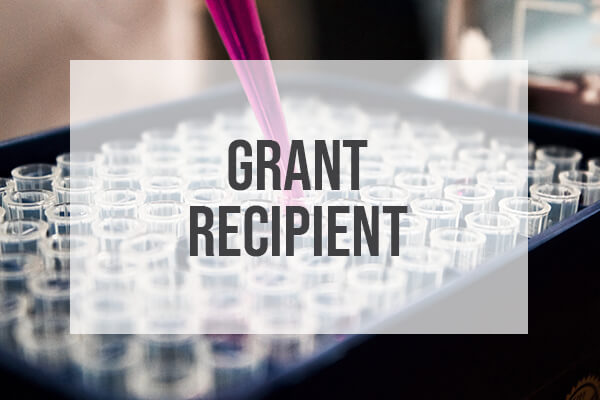Waikato Medical Research Foundation (Inc)
Grant 133
Introduction
The purpose of this study was firstly, to establish a method for quantifying gut-specific bacteria in blood samples collected from colorectal cancer (CRC) patients; secondly, to investigate whether there was a correlation between the amount of gut-specific bacteria in the blood and clinical parameters of CRC; and thirdly, to evaluate this technique for its usefulness as a biomarker of CRC disease progression.
Bacterial translocation – a phenomenon by which the gastrointestinal flora pass over to the blood – may be increased in colon cancer and may also influence the prognosis for the patient. Real-time or quantitative polymerase chain reaction (qPCR) is a sensitive molecular method that can be used to quantify total bacterial ribosomal DNA (16s rDNA), which correlates to the amount of bacteria present in a given biological sample. Gut-specific bacteria present in the blood can therefore be quantified using specific probes targeted to the genera or species that usually colonise the gut. The total number of bacteria in the blood of colon cancer patients, at various stages of disease, was compared with the total bacterial number from the blood of healthy volunteers. This helped us to determine the prognostic value of bacterial translocation in different stages of colon cancer.
Materials and Methods
After obtaining ethical approval from the Northern Y Ethics committee, blood samples were collected from 20 normal volunteers for extraction of total blood DNA. Blood samples were also obtained from patients of colorectal cancer (CRC) enrolled for elective surgery under the supervision of Dr. Graeme Dickson, Consultant Gastroenterologist, Waikato Hospital, Hamilton. The criteria for selection of participation in the study were as follows:
For healthy control subjects: people of either gender, aged 40 years and above that had not taken any antibiotic therapy for the previous four weeks or had any chronic gastrointestinal dysfunction, including Crohn’s Disease or Irritable Bowel Syndrome.
For colorectal cancer patients: a confirmed diagnosis of colorectal cancer, with no antibiotic therapy for the previous four weeks and no recent history of sepsis. Participants were excluded if they were unable to give informed consent. Colon biopsies were collected during the normal course of treatment and the clinical stage of colorectal cancer was assessed by a gastroenterologist based on histology using TNM staging. T describes the size of the tumor and whether it has invaded nearby tissue, N describes regional lymph nodes that are involved, and M describes distant metastasis (spread of cancer from one body part to another).
200 μl of blood (collected in K2EDTA tubes) was obtained from study participants at a single timepoint. These were then processed for isolation of total DNA using the protocol of QIAamp® DNA Blood Mini kit, albeit with one modification. To 200 μl blood, 160 μl lysis buffer and 40 μl lysozyme (10 mg/ml) were added to allow for lysis of gram-positive bacteria. The sample was incubated at 37°C for 1 h. then 40 μl protease and 400 μl AL buffer were added, and the sample was further incubated at 56°C for 30 min. At this point, to each sample, 20 ng of fungal DNA (Sclerotinia sclerotiorum) was added as an internal microbial control chosen as it is not naturally present in human blood. Briefly, absolute ethanol (400 μl) was added, and the sample was applied to the QIAamp spin column to allow binding of DNA to the matrix. Unbound impurities were washed through three successive washes, and then the DNA was eluted in 200 μl Elution buffer (containing Tris EDTA, pH7.2). The DNA was quantified using a NanoDrop® ND-1000 UV-Vis Spectrophotometer and then stored at
-20°C.
The following primers were used for quantitation of total eubacterial DNA (eubacterial 16s ribosomal DNA) and total fungal DNA (internal transcribed spacer ITS1 ITS4). The bacterial primers were eub2f, GCAGGCCTAACACATGCAAGTC and eub2r, CTGCTGCCTCCCGTAGGAGT (Castillo et al. 2006), while the primers for fungal DNA were ITS1, TCCGTAGGTGAACCTGCGG and ITS4, TCCTCCGCTTATTGATATGC (Hirschhäuser & Fröhlich 2007).
Real-time PCR was performed with Corbett Rotorgene 6000, in a final volume of 10 μl containing 5 μl of Lightcycler® 480 SYBR Green 1 master mix, 3.8 μl distilled water, 0.1 μl of each primer (10 μM) and 1 μl of DNA. The reaction conditions were 94ºC for 10 min followed by 35 cycles of 94ºC for 15 s and 61ºC for 60 s, followed by a melt cycle to confirm the specificity of the amplification product. Each run included at least one standard from the standard curve and a dilution series was done for each sample to confirm that there was no loss of resolution due to impurities in the DNA sample. The functions describing the relationship between the threshold cycle (CT) and c (amplicon concentration in ng/μl) were found to be CT=-2.584x log c+ 0.588 for eubacteria and ct = -3.817x log c + 12.945 for the fungal DNA. The fungal sample was not found in randomly tested blood samples, which were not spiked with the fungal DNA. Standard curves were prepared using the PCR products of Escherichia coli (obtained with eub2 primers) and Sclerotinia sclerotiorum (obtained with its primers). E. coli was used as a representative of the total gut eubacterial flora and S. sclerotiorum as our exogenously added internal control. Ten-fold serial dilutions were performed using 0.0035 ng and 0.01 ng of fungal DNA per reaction for generating the standard curve.
Would you like to support the work of the Foundation?
Contact us for more information, or simply make a donation.




